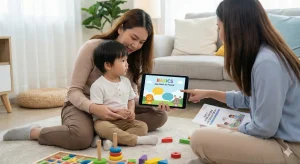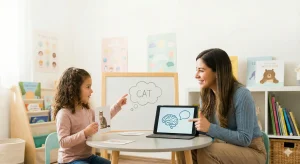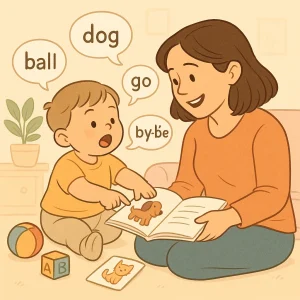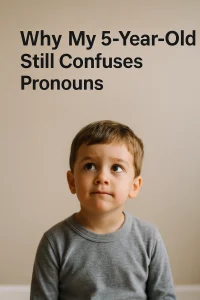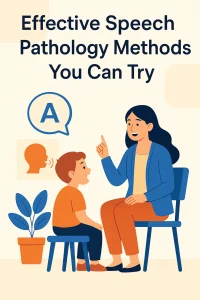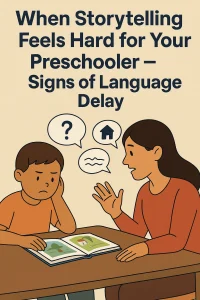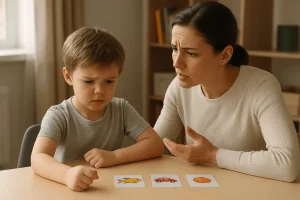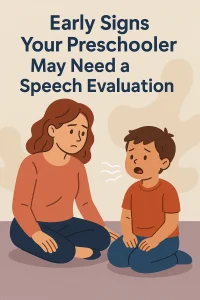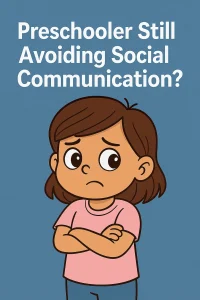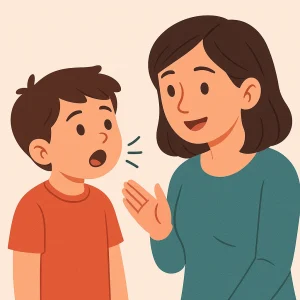Master R Blends: Fun Games & Tips to Boost Speech Clarity
By Rajini D
Last Updated: May 10, 2024
If your child struggles with the R sound, a common speech challenge known as rhoticism, addressing it early is crucial for their confidence and clarity in communication. In this guide, we’ll help you understand and support your child’s mastery of the R sound through practical, engaging strategies. By tackling this linguistic milestone together, we ensure your child not only masters the R sound but also embraces it with confidence in their daily interactions. Let’s get started on this journey to clearer communication!
What is Rhoticism?
Rhoticism refers to the difficulty in pronouncing the R sound, a common speech challenge that many children encounter as they learn to speak. Unlike other consonants, the R sound requires specific tongue placement and airflow, which can be tricky to master without practice and guidance.
A widespread misconception about rhoticism is that it’s rare or indicative of a more serious language disorder. In reality, it’s quite common and typically not a cause for concern on its own. Many children face this hurdle at some point, with most overcoming it as their speech and language skills develop.
Parents should know that rhoticism varies widely among children. Some may pronounce their Rs as Ws (“wabbit” for “rabbit”), while others might omit the sound altogether. These variations are normal steps in the journey towards clear speech and don’t reflect on a child’s overall linguistic ability or intelligence.
The Developmental Timeline of R Sounds
The Developmental Timeline of R Sounds
Understanding the normal timeline for mastering the R sound can help set realistic expectations and guide your support efforts effectively. While every child’s speech development is unique, there are common milestones that most children will meet along the way.
Early Stages (Up to 3 Years)
Initially, toddlers may not pronounce the R sound at all, or they might substitute it with easier sounds, such as W or L. This stage is entirely normal as their vocal and motor skills are still developing. Encouraging babbling and playful imitation during this phase can lay a good foundation for more complex sounds.
Development Phase (3-5 Years)
As children enter preschool, they begin experimenting with different sounds. You might start hearing attempts at the R sound, although it might not be consistent or clear. This is a critical period for intervention if you notice persistent difficulties, as targeted activities can prevent long-term habits from setting in.
Refinement Stage (5-7 Years)
By the time children reach school age, they’re refining their pronunciation skills. The R sound should start to become clearer and more consistent. If challenges persist beyond this point, it might be beneficial to consult with a speech therapist to address specific issues.
Mastery (Around 6-7 Years)
Most children will have mastered the R sound by the age of seven. However, it’s important to continue supporting and reinforcing their skills, especially in reading and conversational contexts where different R sounds occur, like in “car” or “butter.”
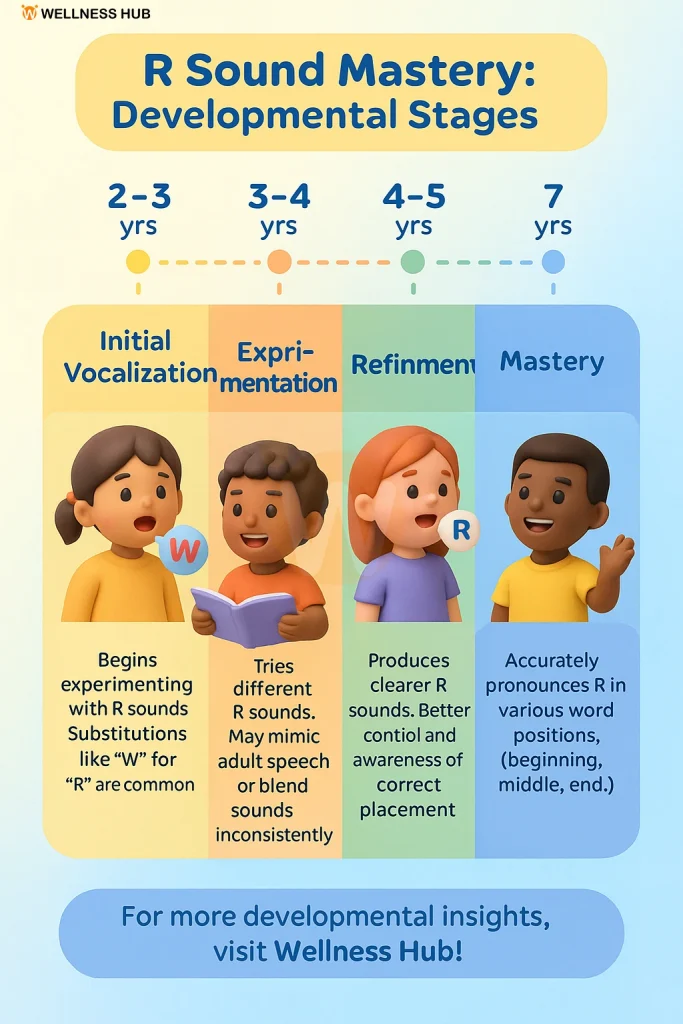
Understanding R Blends
What are R Blends?
R blends are unique combinations of consonants where the second letter is always ‘R’. These blends are called consonant clusters or consonant blends. When we say “blends,” it means that each consonant retains its sound, unlike a digraph where two consonants combine to form a single sound.
For example, in words like “brick” or “frog,” you can clearly hear both consonant sounds. This clear pronunciation makes R blends crucial for clear communication.
Common R Blends
There are several common R blends, which are quite familiar and frequently used in the English language. These include:
- BR: Words like “brick,” “bread,” “brain”
- CR: Words like “crab,” “crib,” “crown”
- DR: Words like “drink,” “drop,” “dream”
- FR: Words like “frog,” “fruit,” “freeze”
- GR: Words like “grin,” “green,” “grab”
- PR: Words like “present,” “press,” “price”
- TR: Words like “tree,” “trap,” “train”
These R blends can appear at the start, middle, or end of words, making them quite versatile.
Why Are R Blends Important?
Mastering R blends is crucial for language development and communication skills. Here’s why:
- Clear Communication: Pronouncing R blends correctly helps in speaking clearly, which is vital for effective communication.
- Reading and Writing: Understanding R blends help with reading comprehension and writing skills, which are essential for academic success.
- Language Development: For children, learning R blends is a key milestone in their speech and language development.
R Blend Words List
R Blend Words List
Let’s explore some common R Blend words to give you a better understanding and examples you can use. We’ll categorize these by their respective R Blends:
BR Blend Words
- BR:
- Brick
- Brown
- Brain
- Bride
- Branch
CR Blend Words
- CR:
- Crab
- Crib
- Crane
- Crack
- Crawl
DR Blend Words
- DR:
- Drink
- Drop
- Dress
- Drum
FR Blend Words
- FR:
- Frog
- Fruit
- Freeze
- Fries
- Friend
GR Blend Words
- GR:
- Grin
- Green
- Grab
- Grass
- Grow
PR Blend Words
- PR:
- Present
- Press
- Price
- Pray
- Prince
TR Blend Words
- TR:
- Tree
- Trap
- Train
- Truck
- Trick
This list provides practical examples for each R Blend, making it easier for readers to practice and understand. The language is simple, keeping the reader engaged and relevant to the topic.
R Blend Word Lists
| R Blend | Word Examples |
|---|---|
| BR | Brick, Brown, Brain, Bracelet |
| CR | Crab, Crib, Crane, Crown |
| DR | Drink, Drop, Dress, Dragon |
| FR | Frog, Fruit, Freeze, Friend |
| GR | Grin, Green, Grab, Ground |
| PR | Present, Press, Price, Prince |
| TR | Tree, Trap, Train, Truck |
Also Read: Help Your Child Master the /r/ Sound (Easy Tips!)
Early Signs of Rhoticism in Children
Identifying early signs of rhoticism in your child can lead to timely intervention, which is crucial for effective speech development. Here’s how you can spot the challenges with the R sound and what indicators to observe as your child begins to communicate.
Key Indicators to Watch For
- Substitution with Other Sounds: The most common early sign is the substitution of the R sound with other sounds. If your child says “wabbit” instead of “rabbit” or “pawty” for “party,” it might indicate difficulty in articulating the R sound.
- Omission of the R Sound: Younger children might omit the R sound entirely from words. For example, “ca” for “car” or “tee” for “tree” can be early signs of rhoticism.
- Distortion of the R Sound: Sometimes, the R sound may not be substituted or omitted but rather distorted. This can sound slushy or unclear, as if the tongue isn’t quite in the right position.
What to Listen For
- Consistency Across Words: Pay attention to whether your child consistently struggles with R sounds across different words or only in specific contexts.
- Progress Over Time: Listen to see if there’s improvement over time or if the struggles persist as they grow older.
- Comparison to Peers: Sometimes, comparing your child’s speech to that of their peers can provide insight into whether they are on track or might need additional support.
Practical Tips for Parents
- Engage in Conversational Practice: Regularly engage your child in conversation and listen attentively to their pronunciation. This not only helps you identify potential issues but also encourages them to use their speech skills actively.
- Read Aloud Together: Reading books aloud provides a fun way to hear and practice the R sound in different words and contexts.
- Record and Replay: Occasionally recording your child’s speech can help you catch subtleties that you might miss in everyday conversation.
Fun and Engaging R Sound Activities
Teaching your child the R sound doesn’t have to be a chore—for both of you. By incorporating fun and engaging activities into your daily routine, you can help your child practice the R sound in enjoyable and stress-free ways. Here are some practical activities that you can use to make learning the R sound a delightful experience.
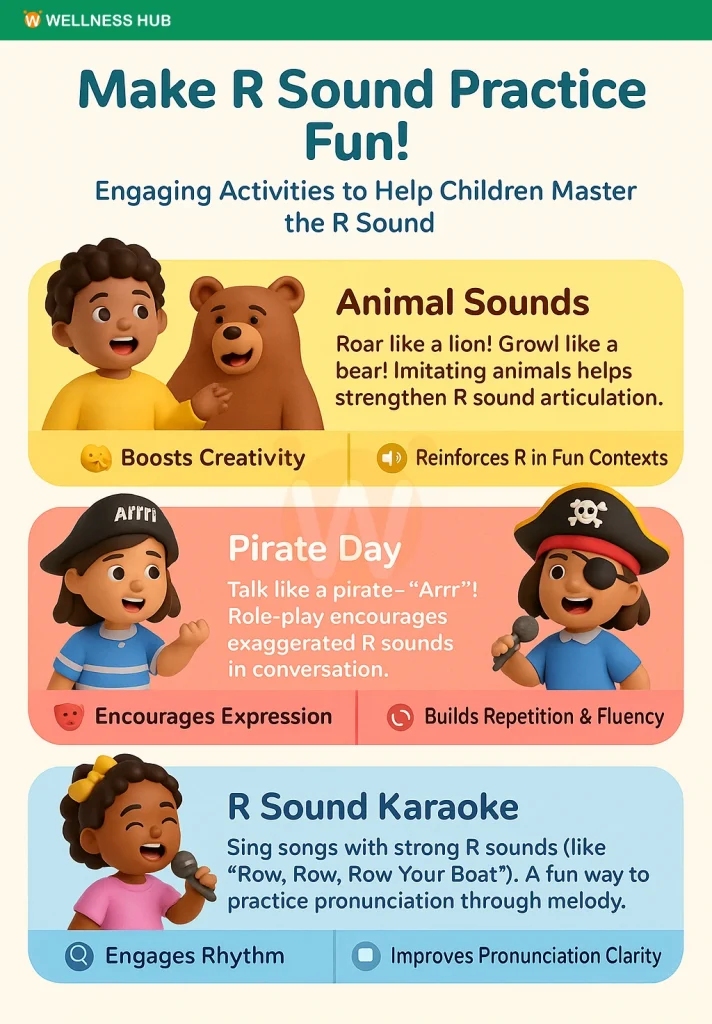
Connecting Rs to Vowels with Visual Aids
Using visual aids can make it much easier for children to understand how to form the R sound when combined with vowels:
- Create Colorful Vowel Charts: Make or print charts that show each vowel combined with an R, like ‘AR,’ ‘ER,’ ‘IR,’ ‘OR,’ and ‘UR.’ Use these to visually demonstrate how the mouth moves with each sound.
- Matching Games: Develop matching card games where your child matches words with the same R-vowel sounds, such as “car” with “star” or “four” with “door.”
Animal Sounds and Role-Play Games
Kids love to play, and incorporating animal sounds or role-play can be a perfect way to practice R sounds:
- Animal Adventures: Encourage your child to imitate animal noises that contain the R sound, like a growling bear or a roaring lion. This not only makes it fun but also helps them practice the throaty quality of the R sound.
- Pirate Day: Spend a day talking like pirates, emphasizing the ‘Arrr’ sound in words. Dressing up and role-playing can make this even more exciting.
Daily Practices: Identifying Rs in Everyday Situations
Incorporate R sound practice into daily activities to help your child use their new skills in real-life situations:
- R Sound Scavenger Hunt: While at the grocery store or on a walk, have a scavenger hunt for objects that start with or contain the R sound.
- Mealtime Words: During meals, talk about foods that have the R sound, like rice, raspberry, or carrot, and ask your child to say them.
Visual and Physical Cues for Teaching R Sounds
Learning to correctly pronounce the R sound can be one of the trickier parts of speech development for children. Visual and physical cues play a critical role in teaching proper tongue and mouth positioning, making the learning process both effective and engaging. Here are some techniques that can help demonstrate these positions clearly and helpfully.
Using Mirrors for Self-Observation
One of the most effective ways to teach children how to position their tongue and lips for R sounds is to use a mirror:
- Mirror Exercises: Encourage your child to watch their mouth in a mirror as they attempt different R sounds. This visual feedback helps them understand and correct their tongue and lip positioning.
- Smile & Slide Technique: Teach them to start with a smile and then slide into the R position while observing the changes in the mirror.
Incorporating Videos for Demonstration
Videos can be a fantastic way to show correct pronunciation:
- Instructional Videos: Use videos that specifically demonstrate tongue positioning for the R sound. Watching these can provide a model for children to mimic.
- Record and Playback: Record your child making the R sound and play it back for them. This allows them to hear and see themselves, providing an opportunity for self-assessment and improvement.
Hands-On Demonstrations
Getting hands-on can be particularly helpful for tactile learners:
- Tongue Positioners: Use tools like tongue depressors or safe, child-friendly pointers to guide the tongue to the correct position.
- Touch and Feel: Gently touch the sides of your child’s face to guide the muscles needed for making the R sound. This can help them feel where their tongue should be.
Interactive Games Using Physical Cues
Make learning fun with games that incorporate physical movement and cues:
- Face Painting: Draw a face on a balloon with different R sound positions marked. Have the child inflate the balloon to see how the mouth shape changes.
- Puppet Play: Use puppets to demonstrate mouth movements, making it a playful and engaging way to learn correct pronunciation.
Tips for Parents: Supporting Your Child at Home
Helping your child overcome challenges with the R sound involves more than just practice; it requires creating a supportive and positive environment at home. Here are some effective strategies to help you foster a nurturing learning atmosphere, establish regular practice routines, and communicate in ways that boost your child’s confidence and progress.
Creating a Positive Learning Atmosphere
- Stay Positive: Show excitement and positivity about your child’s progress, no matter how small. Celebrate successes to keep them motivated.
- Make it Fun: Turn practice into a game or integrate it into your child’s favorite activities to keep them engaged and looking forward to learning.
- Keep it Stress-Free: Avoid showing frustration or disappointment if progress is slow. Children can sense when parents are stressed, which can make them feel pressured.
Establishing Regular Practice Routines
- Integrate Practice into Daily Routines: Incorporate R sound practice into everyday activities, like during mealtime, bath time, or on car rides. This helps make practice a natural part of the day.
- Set Aside Dedicated Time: While integrating practice, also ensure there are specific times set aside for focused practice, ensuring consistency without overwhelming your child.
- Use Visuals and Reminders: Visual aids can help remind your child of their practice times and the sounds they are working on. For instance, a chart on the fridge with R words can prompt practice during meal prep.
Effective Communication for Encouragement and Feedback
- Be Specific with Praise: Instead of general praise like “good job,” be specific about what your child did well, such as “I really heard the R sound when you said ‘rabbit’ just now!”
- Constructive Feedback: Offer feedback in a gentle way that encourages improvement, such as, “You almost got that R sound; try curling your tongue a little more like we practiced.”
- Encourage Self-Assessment: Ask your child how they think they did with certain words or sounds, which encourages self-awareness and responsibility for their learning.
Common Challenges and Solutions for R Sound Pronunciation
Mastering the R sound can be a tricky part of speech development for many children. Recognizing common pronunciation mistakes and knowing how to address them effectively can greatly ease this learning process. Here are some frequent challenges children face with R sounds, along with tailored exercises that can help them overcome these hurdles.
Frequent Pronunciation Mistakes
- W for R Substitution: Common in younger children, where “rabbit” becomes “wabbit.”
- Dropping the R Sound: Omitting the R altogether, making “car” sound like “ca.”
- Slushy or Muffled R: Occurs when the tongue doesn’t curl the right way, leading to a less crisp sound.
Tailored Exercises to Overcome R Sound Issues
- Exaggeration Technique: Encourage your child to exaggerate the R sound in a playful, exaggerated manner. Overemphasizing the sound can help them understand the mouth movements necessary.
- Tongue Curling Exercises: Teach them to curl their tongue upward toward the roof of the mouth. Practice with words like “butter” or “feather” where the R comes in different positions.
- Visualization Tools: Use diagrams or videos that show the tongue’s position when making the R sound. Seeing a visual can make the abstract concept of tongue placement more concrete.
Practical Tips for Addressing Common Challenges
- Slow Down: Encourage your child to slow their speech down when practicing R sounds. This can help them focus on moving their mouth and tongue correctly.
- Practice with Rhymes: Rhymes and songs that emphasize the R sound can make practice more enjoyable and memorable. For instance, rhymes like “Row, row, row your boat” highlight the R sound in a fun context.
- Regular Feedback and Positive Reinforcement: Offer frequent positive feedback and constructive corrections. Positive reinforcement encourages more practice and effort, while gentle corrections guide them toward the correct pronunciation.
Read more: Perfecting the /r/ Pronunciation: A Tongue Position Guide
Using R Blends in Sentences
After learning about the common challenges with R Blends and practicing individual words, it’s time to apply them in context. Here are some short phrases and sentences that incorporate R Blends, helping children practice their pronunciation.
Short Sentences with BR
- The brick is heavy.
- She loves brown chocolate.
- I have a smart brain.
- The bride is beautiful.
- The branch fell off the tree.
Short Sentences with CR
- The crab is red.
- The baby sleeps in a crib.
- The crane lifted the load.
- She wore a crown.
Short Sentences with DR
- Please drink your water.
- Don’t drop the glass.
- The dress is new.
- He played the drum.
- The dragon flew away.
Short Sentences with FR
- The frog jumped.
- I like eating fruit.
- Let’s freeze the ice cream.
- She has freckles.
- He is my best friend.
Short Sentences with GR
- He gave a big grin.
- The grass is green.
- Grab the ball!
- The ground is wet.
- He is feeling grumpy.
Short Sentences with PR
- What a nice present.
- Press the button.
- The price is high.
- Let’s pray together.
- He is a prince.
Short Sentences with TR
- The tree is tall.
- Watch out for the trap.
- The train is late.
- The truck is big.
- That’s a neat trick.
R Blends in Sentences
| R Blend | Short Sentences |
|---|---|
| BR | The brick is heavy. | She loves brown chocolate. |
| CR | The crab is red. | The baby sleeps in a crib. |
| DR | Please drink your water. | Don’t drop the glass. |
| FR | The frog jumped. | I like eating fruit. |
| GR | He gave a big grin. | The grass is green. |
| PR | What a nice present. | Press the button. |
| TR | The tree is tall. | Watch out for the trap. |
These sentences offer a fun and practical way to practice R Blends in context. For more support on speech and language development, including help with pronunciation issues, Wellness Hub provides a range of resources that you can explore at Wellness Hub.
Conclusion
Mastering the R sound is a key step in your child’s speech growth. It boosts their confidence and helps them communicate clearly. Remember, practice makes perfect! Keep sessions fun and engaging, and celebrate every small victory to keep your child motivated.
Need more tips and tools? Visit Wellness Hub. We have plenty of resources and professional guidance to support your journey. Together, we’ll make learning enjoyable and effective, ensuring your child masters the R sound with ease. Join our community at Wellness Hub, where support meets innovation in speech therapy.
Frequently Asked Questions:
1. What are R Blends?
R Blends are combinations of consonants where the second letter is ‘R’. These blends, also known as consonant clusters, include BR, CR, DR, FR, GR, PR, and TR.
2. Why are R Blends important for children?
R Blends are important because they help children develop clear communication and strong language skills. Mastering these blends aids in reading, writing, and effective speaking.
3. What are some common examples of R Blend words?
Common R Blend words include “brick,” “crab,” “drink,” “frog,” “grin,” “present,” and “tree.”
4. How can I teach R Blends to children?
You can teach R Blends to children through fun activities like games, rhymes, and reading books that include R Blend words. Incorporating movement and using visual aids also helps.
5. What are some common pronunciation challenges with R Blends?
Children often mispronounce R Blends, such as replacing ‘R’ with ‘W’ or dropping the ‘R’ sound altogether. They may also blur the blend, making it difficult to distinguish the individual consonant sounds.
6. How can I help my child improve their R Blend pronunciation?
To help your child improve their R Blend pronunciation, you can use tongue twisters, visual cues, rhyming games, and practice with words and sentences. Seeking help from a speech therapist can also be beneficial.
7. What are some fun games to practice R Blends?
Fun games for practicing R Blends include “Rhyming Words,” “Beach Ball Toss,” and “Articulation Chain.” These games make learning interactive and enjoyable for children.
8. What books are good for teaching R Blends to children?
Great books for teaching R Blends include “Room on the Broom” for BR blends, “The Very Cranky Bear” for CR blends, “Do Not Bring Your Dragon to the Library” for DR blends, and “The Gruffalo” for GR blends.
9. When should I seek professional help for my child’s speech issues with R Blends?
If your child continues to struggle with R Blends despite practice and patience, it’s a good idea to seek help from a speech therapist. Wellness Hub offers comprehensive services for speech and language development.
10. How can Wellness Hub help with speech and language issues?
Wellness Hub provides resources and support for speech and language development. Whether you’re a parent helping your child or an adult looking to improve communication skills, Wellness Hub offers professional guidance to help you achieve your goals.
About the Author:
Rajini Darugupally
M.Sc., Speech-Language Pathologist (9+ years of experience)
Rajini is a passionate and dedicated Speech-Language Pathologist with over 9+ years of experience, specializing in both developmental speech and language disorders in children and rehabilitation in adults. Driven by a desire to empower each individual to find their voice, Rajini brings a wealth of experience and a warm, genuine approach to therapy.
Currently, at Wellness Hub, she thrives in a team environment that values innovation, compassion, and achieving results for their clients.
Connect with Rajini to learn more about how she can help you or your loved one find their voice.
Book your Free Consultation Today
Parent/Caregiver Info:
Client’s Details:
* Error Message
